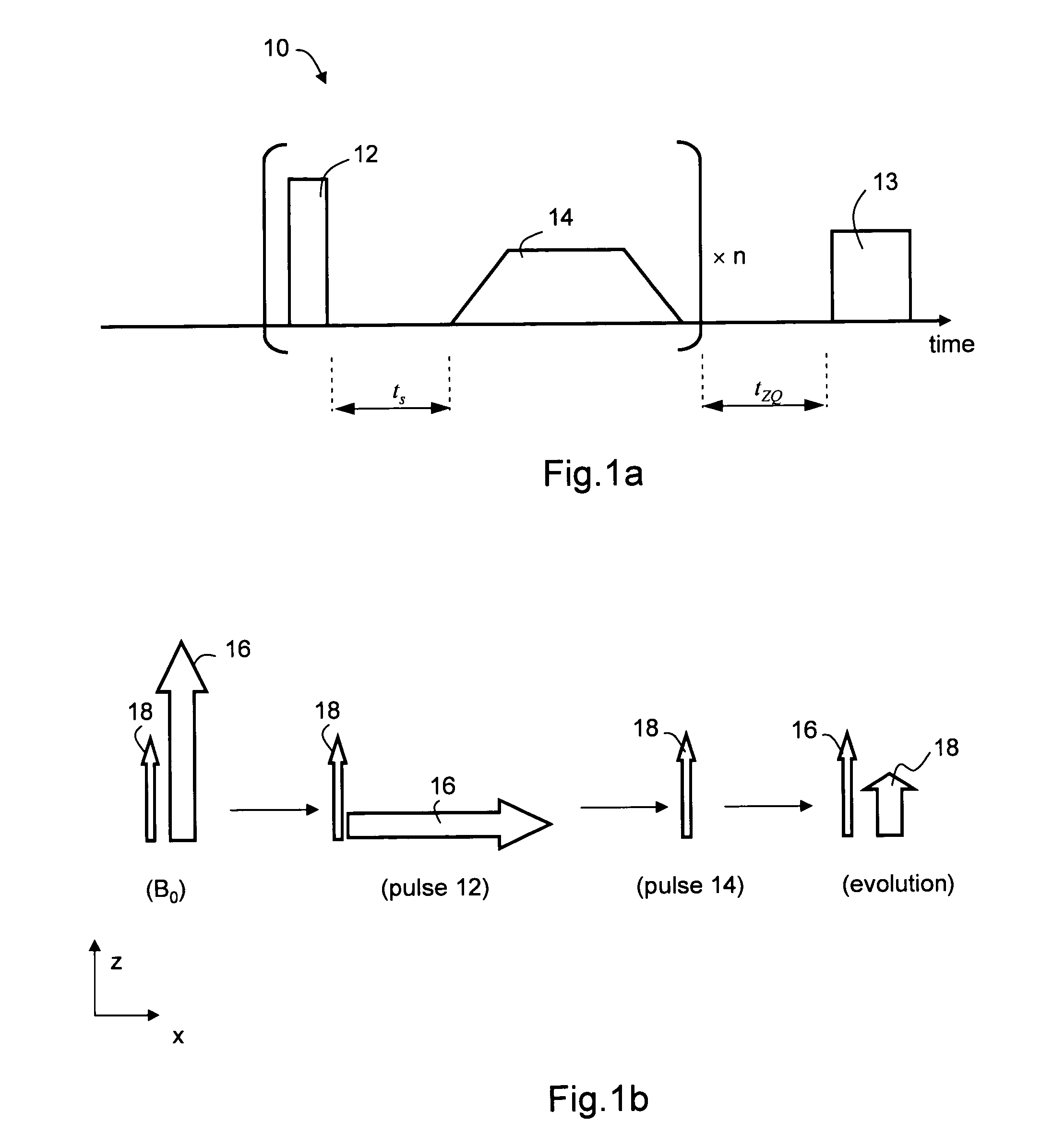Method and Apparatus for Magnetic Resonance Analysis
- Summary
- Abstract
- Description
- Claims
- Application Information
AI Technical Summary
Benefits of technology
Problems solved by technology
Method used
Image
Examples
example 1
Materials and Methods
[0101]Experiments were performed on a 8.47 T WB 360 MHz Bruker micro-imager. The repetition factor was n=4. Signals acquired after longitudinal relaxation obtained using pulse sequence 20 were subtracted from signals acquired after magnetization transfer obtained using pulse sequence 10. The period tZQ was varied and a magnetization transfer rate was calculated. The lengths of the 90° pulses were 460 μs for sequence 10 and 120 μs for sequence 20. Two measurements were also made with pulses of 120 μs and without subtraction.
[0102]The imaging sequence used was a multi-spin echo (TSE factor=4, TE / TR=6 / 3500 ms). Data matrix: 128×128, FOV of 10 mm in plane and a slice thickness of 1 mm. The sequence was tested on mice models.
Results
[0103]FIGS. 5a-c are images obtained in accordance with the present embodiment by subtracting signals acquired after pulse sequence 20 from signals acquired after pulse sequence 10. Shown in FIGS. 5a-c are images obtained for three values ...
example 2
Materials and Methods
[0108]Experiments were performed on a 3T Philips Intera scanner. The repetition factor was n=8. The evolution period tZQ was varied and a magnetization transfer rate was calculated.
[0109]The imaging sequence used was a RARE (TSE factor=15, TE / TR=80 / 4000 ms). Data matrix: 128×128, FOV of 230 mm in plane and a slice thickness of 5 mm. The sequence was tested on a healthy volunteer using a transmit / receive head coil. Signals acquired after non-coherent longitudinal relaxation obtained using pulse sequence 20 were subtracted from signals acquired after magnetization coherence obtained using pulse sequence 10. The pulse lengths were 700 μs for pulse sequence 10 and 200 μs for pulse sequence 20.
Results
[0110]FIG. 6a shows a T2 weighted image of the axial slice on which the experiment was carried out. Two regions of interest (ROIs) on which the preliminary ROI analysis was carried out are marked with ellipses: one ROI is centered on a white matter region, and the other ...
PUM
 Login to View More
Login to View More Abstract
Description
Claims
Application Information
 Login to View More
Login to View More - R&D
- Intellectual Property
- Life Sciences
- Materials
- Tech Scout
- Unparalleled Data Quality
- Higher Quality Content
- 60% Fewer Hallucinations
Browse by: Latest US Patents, China's latest patents, Technical Efficacy Thesaurus, Application Domain, Technology Topic, Popular Technical Reports.
© 2025 PatSnap. All rights reserved.Legal|Privacy policy|Modern Slavery Act Transparency Statement|Sitemap|About US| Contact US: help@patsnap.com



